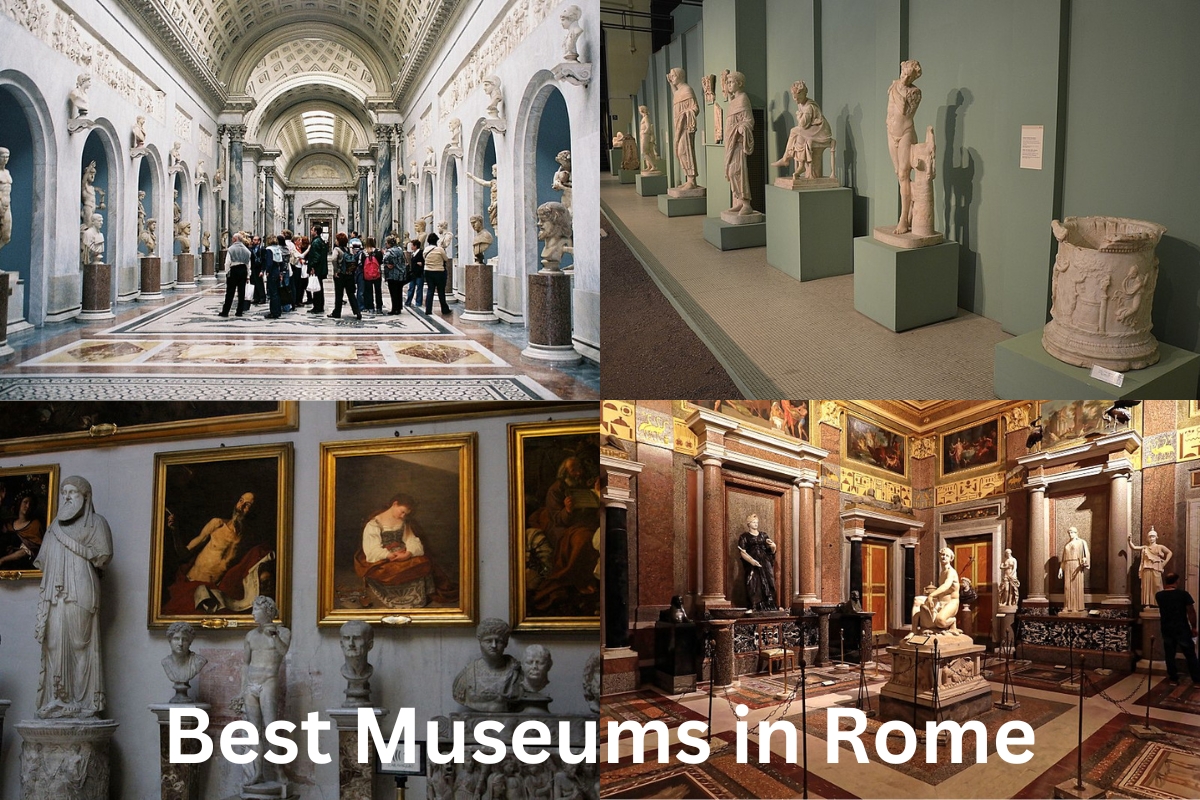Rome is home to some of the finest museums in the world. And is it any wonder given it’s long rich history going back several thousands years?
The city is essentially a living, breathing museum itself with many buildings and relics from the ancient Roman empire spread out across it.
If it is art you are in search of the Rome has some of the richest art museums that rival any other city in the world.
The Renaissance had a profound affect on Rome, with the explosion in new painting methods and plenty of wealthy benefactors to fund their creation, Rome is teeming with both Renaissance paintings and sculptures.
Best Museums in Rome
1. Vatican Museums
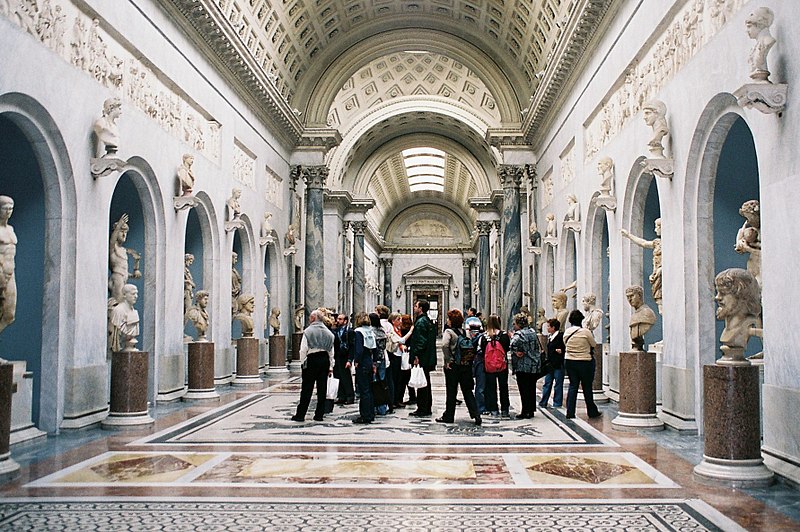
There are no other museums in Vatican City open to the public aside than the Vatican Museums.
They feature objects from the vast collection amassed by the Catholic Church and the papacy through the ages, including some of the world’s most famous Roman statues and Renaissance masterpieces.
Also Read: Famous Artworks in Rome
There are currently 640 employees working at the museums, who are spread across 40 different administrative, scholarly, and restoration departments. The museums have over 70,000 objects, of which only 20,000 are on display.
Pope Julius II, who reigned in the early 16th century, is credited with founding the museums.
The highlights include the Sistine Chapel, with its ceiling and altar wall decorated by Michelangelo, and the Stanze di Raffaello, created by Raphael, can be found along the route that visitors walk through the Vatican Museums.
2. Galleria Borghese
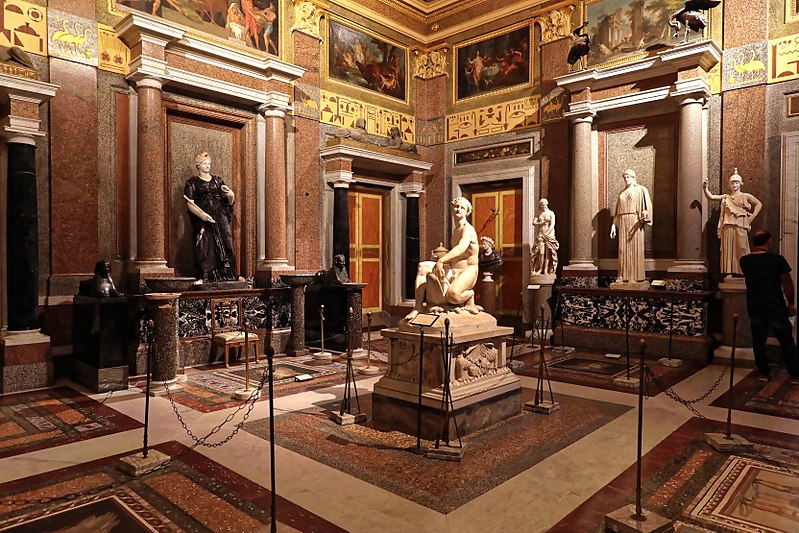
The historic Villa Borghese Pinciana in Rome, Italy now houses the Galleria Borghese (Italian for “Borghese Gallery”).
Originally, the gallery building and its grounds were considered one entity, but today, visitors often treat the gardens of Villa Borghese as a separate attraction.
The Borghese Collection was founded by Cardinal Scipione Borghese, the nephew of Pope Paul V, and is now housed in the Galleria Borghese (reign 1605–1621).
Flaminio Ponzio, working from designs by Scipione Borghese, built the villa suburbana for the aristocrat to use as a rural retreat outside of Rome.
In addition to being an early patron of Bernini, Scipione Borghese was also a dedicated collector of works by Caravaggio. His paintings, such as Boy with a Basket of Fruit, St. Jerome Writing, and Sick Bacchus, are all prominently displayed in the collection.
The Entombment of Christ by Raphael and works by Peter Paul Rubens and Federico Barocci are also noteworthy paintings.
3. MAXXI
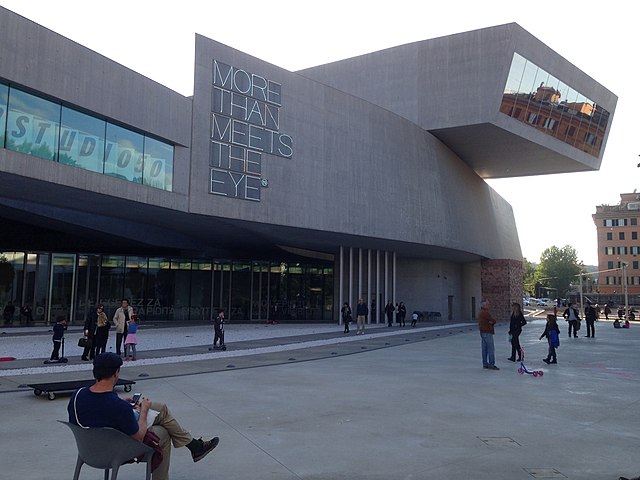
It is more popular to refer to the Museo nazionale delle arti del XXI secolo as just the MAXXI. This museum is also well-known for its status as a prominent hub for the arts in Rome.
This enormous complex consists of art galleries and architecturally designed buildings, with the galleries focusing mostly on modern art and architecture.
Not only is it one of the most well-known structures to have been constructed in Rome since the turn of the 21st century, but it has also quickly established itself as a well-known landmark among both residents of Rome and visitors to the city.
Zaha Hadid, an internationally acclaimed architect, was chosen as the victor in a competition that was organized to select the winning design for the MAXXI building.
The MAXXI L’Aquila museum is located in a structure that dates back to the 18th century and is known as the Palazzo Ardinghelli. In 2009, the building was severely damaged by an earthquake, which compelled the city to begin the process of rehabilitating and rebuilding the edifice.
4. National Etruscan Museum
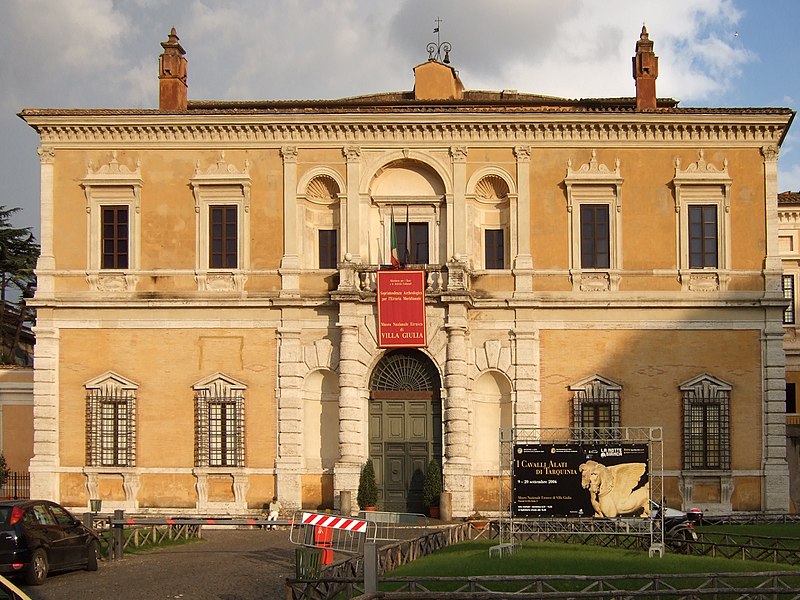
Villa Giulia in Rome, Italy is home to the National Etruscan Museum (Italian: Museo Nazionale Etrusco), a museum dedicated to the ancient civilization of the Etruscans.
Papacy leader Pope Julius III commissioned the construction of this villa, hence the name. It was owned by the Pope until 1870, when the Risorgimento and the collapse of the Papal States made it part of the Italian Kingdom.
The museum, which has called the villa home since the early 20th century, was established in 1889 as part of the same nationalistic movement, with the intention of assembling all the pre-Roman antiquities of Latium, southern Etruria, and Umbria, belonging to the Etruscan and Faliscan civilizations.
Most visitors to the museum come to see the clay funeral monument of a Bride and Groom who look like they’re reclining at a dinner party (the so-called Sarcofago degli Sposi, or Sarcophagus of the Spouses).
5. Doria Pamphilj Gallery
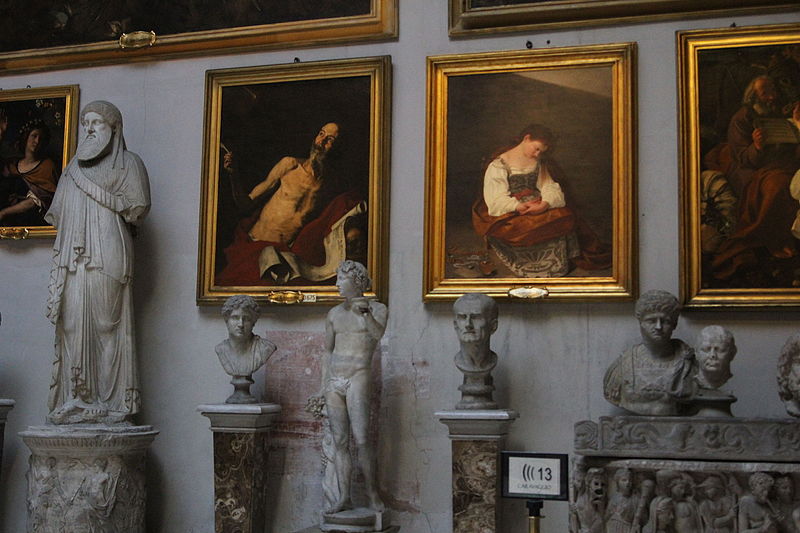
The Doria Pamphilj Gallery is a vast art collection located between Via del Corso and Via della Gatta in Rome, Italy.
The primary entrance is located on Via del Corso (until recently, the entrance to the gallery was from the Piazza del Collegio Romano).
Santa Maria in Via Lata is near to the palace facade on Via del Corso. As with the palace, it remains in the possession of the noble Roman family Doria Pamphili.
Tours of the state chambers frequently conclude with performances of Baroque and Renaissance music as a tribute to the location and the works of art they hold.
Since the 16th century, the Doria, Pamphilj, Landi, and Aldobrandini families have amassed a vast collection of paintings, furniture, and statues, which is now unified via marriage and descent under the shortened surname Doria Pamphilj.
The collection consists of paintings and furnishings from Innocent X’s Palazzo Pamphilj (in Piazza Navona), which he left to his nephew Camillo Pamphilj.
Portrait of Innocent X, who came to the papacy in 1644 as cardinal Giovan Battista Pamphilj, is regarded as the collection’s crowning achievement.
6. Palazzo Massimo alle Terme
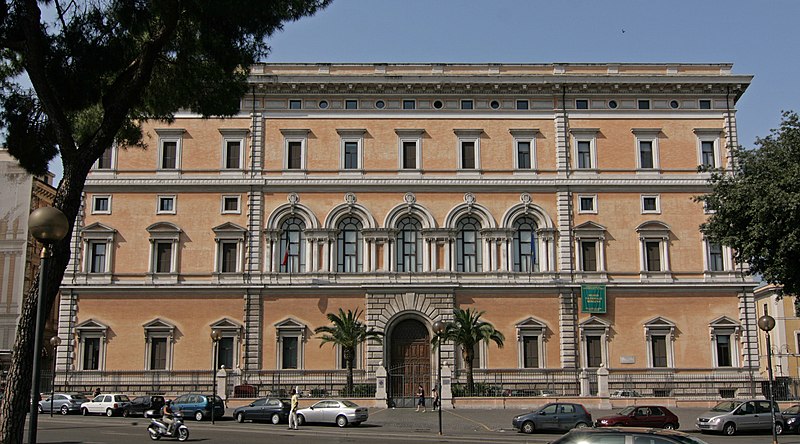
Rome’s Palazzo Massimo alle Terme is a grand palace located in the Castro Pretorio neighborhood, right off the Piazza dei Cinquecento and the Termini train station.
Funded by Law 92/81, which was passed to improve Rome’s archaeological legacy, the Italian government made the purchase in 1981.
Since 1998, the building—after being restored by architect Costantino Dardi—has served as the primary home for the National Roman Museum and the headquarters for the Special Superintendence of Archaeology, Fine Arts, and Landscape of Rome.
The Museum is spread throughout the building’s basement (which houses Italy’s greatest medal collection), ground floor, and two upper floors.
7. Galleria Nazionale d’Arte Moderna
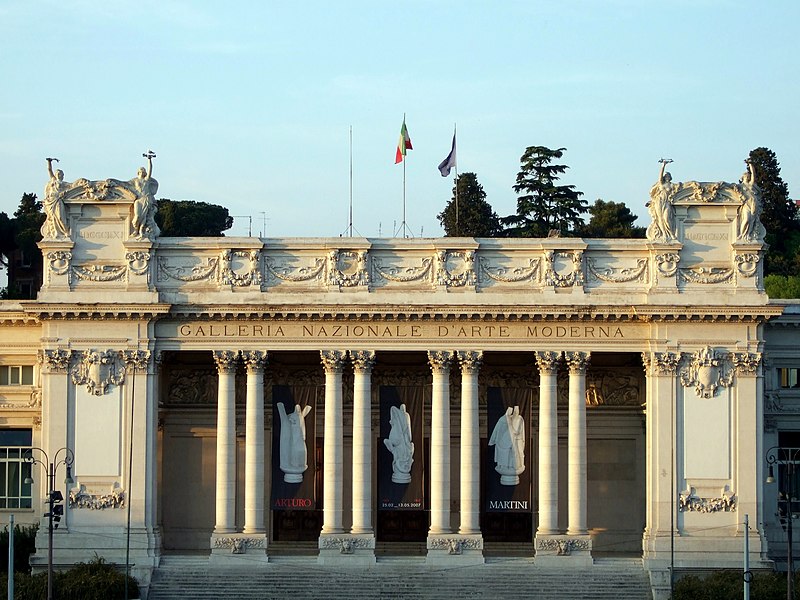
Galleria Nazionale d’Arte Moderno e Contemporanea, often known as La Galleria Nazionale, is an art gallery located in Rome, Italy.
It was established in 1883 by then-Minister Guido Baccelli and is dedicated to modern and contemporary art.
The museum’s collection of around 1100 paintings and sculptures from the nineteenth and twentieth centuries is the largest in Italy.
Among the Italian painters included are Giacomo Balla, Umberto Boccioni, Alberto Burri, Antonio Canova, Giorgio de Chirico, Lucio Fontana, Amedeo Modigliani, Giacomo Manzù, Vittorio Matteo Corcos, and Giorgio Morandi.
Braque, Calder, Cézanne, Degas, Duchamp, Giacometti, Kandinsky, Mondrian, Monet, Jackson Pollock, Rodin, and Van Gogh are among the foreign artists whose works are on display at the museum.
The Galleria Nazionale includes the Museo Boncompagni Ludovisi for le arti decorative, the Museo Hendrik C. Andersen, the Raccoltà Manzù, and the Museo Mario Praz.
8. National Gallery of Ancient Art in Barberini Palace
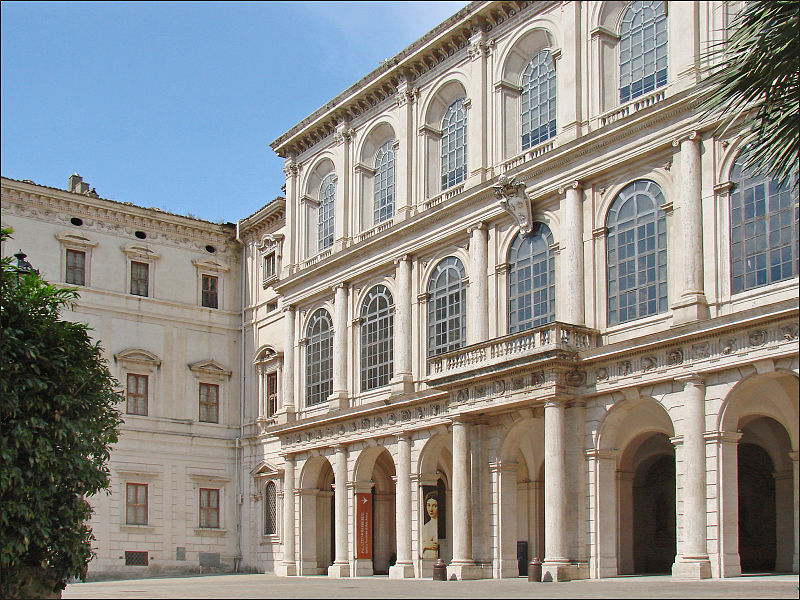
The Galleria Nazionale d’Arte Antica, sometimes known as the National Gallery of Ancient Art, is an art museum located in Rome, Italy.
It is Rome’s main national collection of earlier paintings, largely from before 1800; it does not contain any antiques. It has two locations: Palazzo Barberini and Palazzo Corsini.
Carlo Maderno, a sixteenth-century architect, created the Palazzo Barberini on the former site of Villa Sforza for Pope Urban VIII, a member of the Barberini family.
Pietro da Cortona adorned the central salon ceiling with the visual panegyric of the Allegory of Divine Providence and Barberini Power.
9. Museo Nazionale Romano, Palazzo Altemps
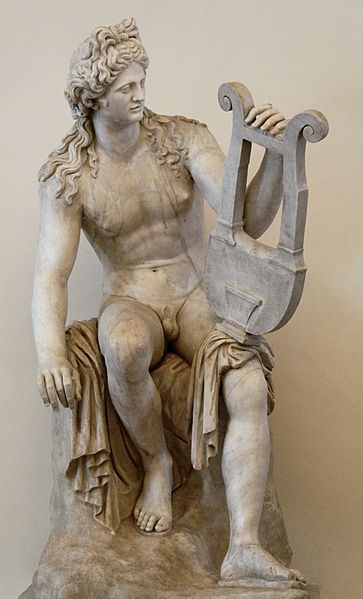
The National Roman Museum (Italian: Museo Nazionale Romano) is a museum in Rome, Italy, with various branches in different buildings throughout the city.
It displays exhibits from Rome’s pre- and early history, with a focus on archaeological discoveries from the period of Ancient Rome.
Founded in 1889 and inaugurated in 1890, the museum’s first goal was to collect and exhibit archaeologic materials discovered during excavations following Rome’s union with the Kingdom of Italy.
The Kircherian Museum, archaeologic works assembled by the antiquarian and Jesuit priest Athanasius Kircher, which previously had been stored within the Jesuit compound of Sant’Ignazio, formed the foundation of its collection. Following the destruction of the Society of Jesus in 1874, the collection was taken over by the state.
The recently acquired Collection Ludovisi, as well as the valuable national collection of Ancient Sculpture, were given to the National Roman Museum by the Italian state in 1901. Discoveries made during the late-nineteenth-century urban renovation have been added to the collections.
10. Centrale Montemartini
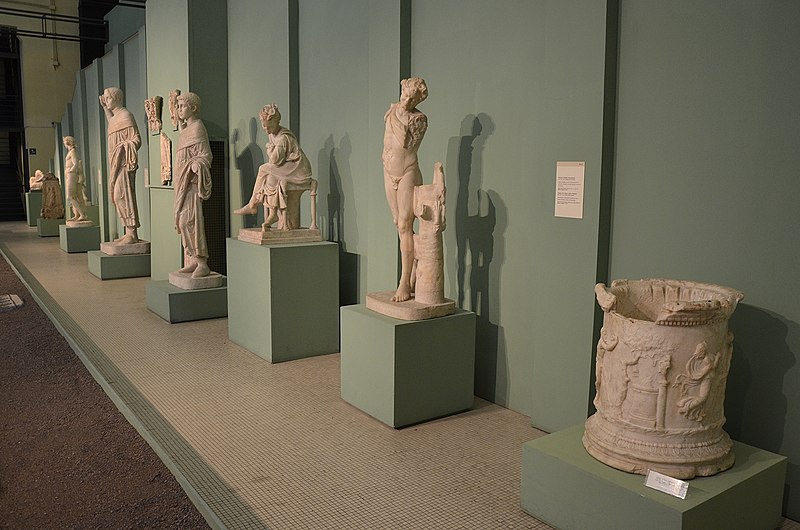
The Montemartini Power Station is a historic thermal power facility in Rome. It was constructed in the first part of the twentieth century and is situated in the neighborhood of Ostiense.
The plant has been decommissioned and turned into an archaeological museum since 1997.
It houses Roman statues and sculptures, some of which are already on display at the Capitoline Museums and others of which were recovered from municipal deposits. Additionally, it houses epigraphs and mosaics.

